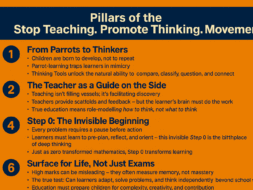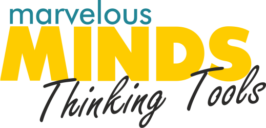As a parent, you should ask whether your child is being taught in a behaviouristic or constructivist way. The behaviourist approach, for example, in maths teaching sets a scene to let your child imitate recipes and NOT to make own decisions.
Did you know you can only think about one thing at a time? When thinking about a dice, you can only thing about one set of pips for example the 6. You cannot think of the 6 and the 4 simultaneously. When thinking about the 6 you cannot simultaneously think about the weight of the dice.
When the teacher is explaining one of the laws of exponents, you child may still be pondering on the division part while the teacher is already showing how it comes that exponents are subtracted from each other when dividing. And while your child is reflecting on what was missed out the teacher has already started to do revision on what happen with exponents during multiplication.
When this is done your child is already stressing about what was missed and then misses out on the revision on what happens to exponents during multiplication.
During this process your child did not take even one maths decision. Neither did your child had the privilege to make a mistake and consult a peer. This means your child also missed out on gaining life skills to contemplate and verbalise a mathematical process which goes hand in hand with Emotional Intelligence (EI).
What was spoon-fed and absorbed resides in the short-term memory and is lost as soon as the space is needed for something else. Success, when following this approach, is determined by the level of your child’s adherence to algorisms and recipes.
The purpose of the constructivist approach on the other hand is to empower your child to think, discover and make decisions. This requires sophisticated facilitation skills from the teacher. This process is driven by Socratic questions in tandem with listening to your child’s innerspeech and providing thinking scaffolds to guide your child to discover the exponent laws. This process is then fixed and welded as a new neural pathway which resides in the long-term memory and cannot be undone, reversed or erased.
Success with the constructivist approach is determined by the ability to strategize, plan and manage thinking by making use of inborn Thinking Tools and goal attainment.
According to Professor Constance Kamii, it took 150 years since Copernicus for the heliocentric theory to become universally accepted. Jean Piaget set the constructivist about 50 years ago. We still have 100 years to go to change the education system towards the constructivist approach.





